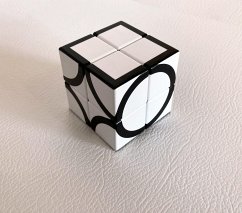
Necker Cube
Versandkostenfrei!
Versandfertig in 6-10 Tagen
19,99 €
inkl. MwSt.

PAYBACK Punkte
10 °P sammeln!
Please note that the content of this book primarily consists of articles available from Wikipedia or other free sources online. The Necker Cube is an optical illusion first published in 1832 by Swiss crystallographer Louis Albert Necker. The Necker Cube is an ambiguous line drawing. It is a wire-frame drawing of a cube in oblique perspective, which means that parallel edges of the cube are drawn as parallel lines in the picture. When two lines cross, the picture does not show which is in front and which is behind. This makes the picture ambiguous; it can be interpreted two different ways. When...
Please note that the content of this book primarily consists of articles available from Wikipedia or other free sources online. The Necker Cube is an optical illusion first published in 1832 by Swiss crystallographer Louis Albert Necker. The Necker Cube is an ambiguous line drawing. It is a wire-frame drawing of a cube in oblique perspective, which means that parallel edges of the cube are drawn as parallel lines in the picture. When two lines cross, the picture does not show which is in front and which is behind. This makes the picture ambiguous; it can be interpreted two different ways. When a person stares at the picture, it will often seem to flip back and forth between the two valid interpretations (so-called multistable perception). The effect is interesting because each part of the picture is ambiguous by itself, yet the human visual system picks an interpretation of each part that makes the whole consistent. The Necker Cube is sometimes used to test computer models of thehuman visual system to see whether they can arrive at consistent interpretations of the image the same way humans do.












